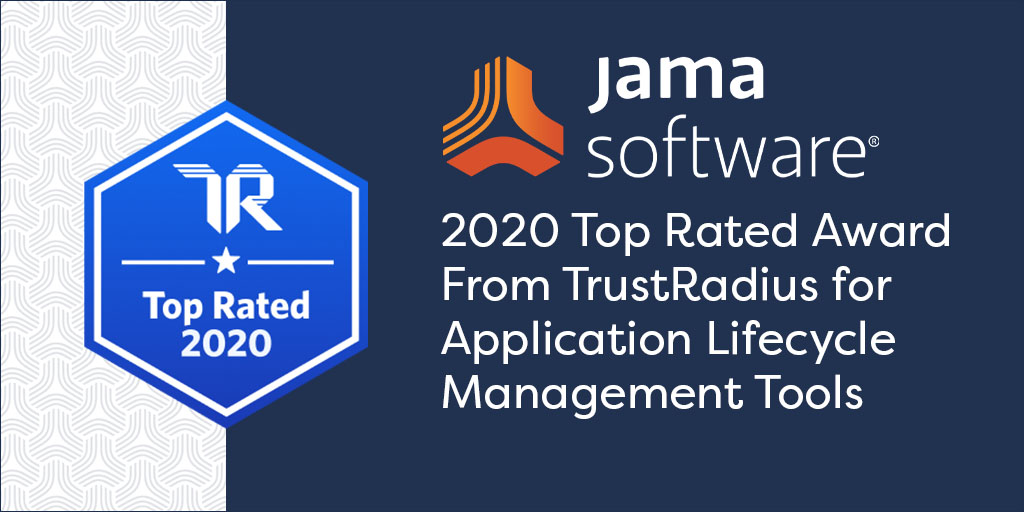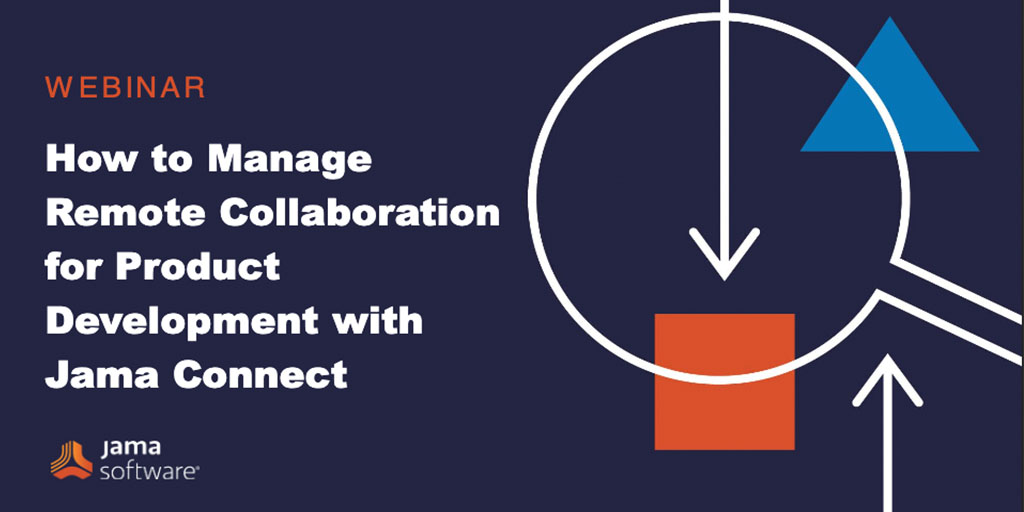TrustRadius Names Jama Connect™ a 2020 Top-Rated Application Lifecycle Management Platform
We are so happy to share that Jama Software has been recognized as a leader among application lifecycle management (ALM) tools for the second year in a row. “We are honored to have received this recognition by TrustRadius. We have the largest team of developers focused on requirements management for safety-critical products,” said Jama Software CEO, Marc Osofsky. “And we’re honored that the most innovative companies in industries such as medical device, automotive, semiconductor, aerospace and defense have chosen to work with us so that together we can shape the future.”
Customer-centric Criteria
With a trScore of 7.9 out of 10] and over 94 verified reviews, Jama Connect™ is proud to be recognized by the TrustRadius community as a valuable player in the Application Lifecycle Management software category.
One of the things we’re most proud of is that our customers selected us—with their excellent satisfaction ratings—as a top-rated ALM tool. This rating was based purely on TrustRadius’ verified customer reviews; there is no paid placement, and analyst opinions do not influence the rankings. To qualify, a product must have 10 or more recent reviews and a trScore of 7.5 or higher, indicating above-average satisfaction for business technology. Read more about the Top Rated criteria.
“Jama Software is one of those rare SaaS companies that has a passionate following among our users,” said Jama Software CEO, Marc Osofsky. “When our users change companies, they bring us with them. Trust Radius focuses on user satisfaction and reflects our pride in the passion of Jama Nation.”
What Our Customers are Saying
Here are just a few quotes from TrustRadius verified users on how they’re using Jama Connect:
“JAMA Connect is used by our Medicaid Pharmacy Solutions Business Analysis Team for managing requirements for our clients. JAMA Connect provides the solution for housing our requirements in a repository to meet the needs of our customers. The review center is great to review requirements electronically instead of sitting in a meeting to review them. Version control creates a great audit trail.“
-Analyst in Information Technology, Hospital & Healthcare
“Jama Connect is the source of truth for requirements. We have used it internally…to communicate between Engineering, Operations, and Scientists, but also to do requirement reviews with external consortia, to get their input. We are also using it for requirement flow-down and traceability and using several report tools. …having an agile way of dealing with requirements helps us.”
-Engineer, Research Company
“We use Jama Connect for requirements management. It’s used across several business units within R&D to manage requirements from initial creation all the way to generating final design traceability matrices. It has been particularly helpful with managing systems with several subsystems that each have sets of requirements. Rather than waste a significant amount of engineering time, Jama allows us to generate requirement documentation (MRS, PRS, SRS, HRS, V&V Plans, and DTMs) with very little effort.”
-Engineer in Research and Development for Medical Device Company
Our Customers’ Success is Our Success
Helping enable our customers’ success is at the core of everything we do. While we take pride in winning this award, our greatest success is watching how our customers use Jama to not only achieve but exceed their business objectives. “Our customer bonds are deeply rooted and personal. We celebrate the product and career successes we help enable and engage deeply on product direction,” said Osofsky.
We continue to innovate, make improvements to our platform, add new features, expand our integrations, and strive to enhance and broaden our service offerings. Our goal is to continue to provide best-in-class requirements, risk, and test management products and outstanding customer service to our customers now and into the future.
At Jama, we’re proud to create products that inspire such gracious feedback in our user community. Thank you for supporting our work, and for sharing your feedback on TrustRadius.
About TrustRadius: TrustRadius is the customer voice and insights platform that helps tech buyers make great decisions, and helps technology vendors acquire and retain great customers. Each month, over half a million B2B technology buyers use over 222,000 verified reviews and ratings on TrustRadius.com to make informed purchasing decisions. Headquartered in Austin, TX, TrustRadius was founded by successful entrepreneurs and is backed by Next Coast Ventures, Mayfield Fund, and LiveOak Venture Partners.





